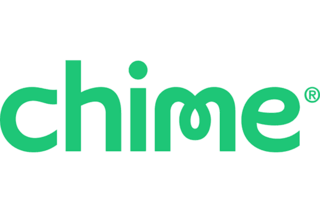Checking vs. Savings Accounts: The Difference and How to Choose
The best national banks and credit unions all offer both checking and savings accounts. These accounts are useful tools for protecting and accessing your money, and with the advent of online banking, it's become even easier to do. There are significant differences to consider when deciding between checking and savings accounts. Read on to find out how these two types of accounts compare.
What is a checking account?
Checking accounts are convenient places to store and access your money at a moment's notice. These accounts make it easy for you to make direct deposits, withdrawals and transfers, whether using an online account or visiting your financial institution in person. There are multiple ways you can access the money stored in your checking account, including:
- Debit cards
- Written checks
- Automated teller machines (ATMs)
- Withdrawal slips
- Peer-to-peer (P2P) payment services
The best checking accounts come in all different forms and from different financial institutions. Some of the types of checking accounts available include:
- Traditional checking: Traditional checking allows you to write checks and access your funds with a debit card, either at an ATM or to make purchases directly. Terms and features like withdrawal limits, fees and benefits will vary.
- Premium checking: This account offers extra perks, including waived fees and free personal checks, but often requires a higher minimum balance.
- Rewards checking: When you use your debit card to make purchases with this account, you will accumulate reward points that can lead to cash back or other benefits.
- Senior checking: This account offers benefits for retired individuals, including waived monthly maintenance fees and free checks.
- Student checking: Geared towards students, this account often includes perks such as ATM fee reimbursement and overdraft forgiveness.
- Second-chance checking: This account allows individuals not eligible for traditional checking accounts because of previous overdrafts or negative balances to open a checking account.
- Interest-bearing: While this account allows individuals to earn interest, account holders usually need to meet requirements such as a minimum number of debit card transactions.
- Business checking: This account makes it easy to track the income and expenditures of your business and may come with additional features to make your business easier to run.
What is a savings account?
A savings account safeguards the money that you aren’t planning to spend in the near future. While all savings accounts will pay you interest, the best savings accounts will offer high-yield opportunities and more benefits, which will help you reach your savings goals.
Like checking accounts, there are a variety of savings accounts, and each comes with its own benefits and perks. Some of the available savings accounts include:
- Traditional savings: Keeping your money in this account will keep it protected and earn you some interest if you keep the minimum required balance.
- High-yield savings: This account offers higher amounts of interest than traditional savings accounts but will usually require a higher minimum balance.
- Money market: This type of account offers higher interest rates than traditional savings accounts and may have checking account features, but it comes with more fees and higher minimum balance requirements.
- Certificate of deposit (CD): CDs will yield higher interest rates, but you won't be able to access your money during the set time period of the CD without incurring a penalty fee.
- Student savings: This account assists students by loosening restrictions like service fees or minimum opening deposits.
- Health savings: If you enroll in a high-deductible health plan, you can open a tax-advantaged health savings account and use it to pay medical expenses and health care costs.
- Individual retirement account (IRA): Traditional and Roth IRAs are tax-advantaged retirement accounts that allow you to contribute $6,500 to $7,500 per year, depending on your age.
How does a checking account work?
After opening a checking account, you’ll find it very easy to deposit and withdraw money. You can make purchases with money straight from your account using a debit card or a P2P service. If you sign up for one of the best joint checking accounts, you and your partner can deposit and withdraw money.
How does a savings account work?
When you open a savings account, you'll most often deposit funds and leave them alone while they accumulate interest. Depending on the terms and type of the account you open, you may not be able to access your funds for a set period of time.
You can also open multiple savings accounts for different purposes. With online banking, you’ll find transferring money between checking and savings accounts very straightforward, which you'll generally need to do to access your money.
What are the main differences between checking and savings accounts?
You’ll find many similarities and differences when comparing savings and checking accounts. One similarity is the assurance that your money is safe in a bank or credit union. Both savings and checking accounts are secure accounts that you can use to protect your funds up to $250,000. The National Credit Union Administration will insure the funds you've deposited into a credit union, and the Federal Deposit Insurance Corporation will guarantee the money you've put into a bank. However, these accounts present a number of differences that you should consider when determining where to put your money.
Purpose
Checking and savings accounts have two very different purposes. A checking account is mainly there to hold your money for spending. You can easily withdraw, transfer, and spend money with a checking account. You can also use your checking account to save money, but there are significantly more benefits to using a savings account to build up your funds.
Savings accounts are for depositing your money and leaving it for an extended period to accumulate interest. Unlike a checking account, a savings account doesn’t offer many convenient ways to spend money. If you’re struggling to set money aside and need tips to help you save for emergencies, large purchases or vacations, setting up a savings account should be at the top of your to-do list.
Access to funds
Both accounts are liquid and allow easy access to your funds through fee-free withdrawals or transfers. If you're storing your money to spend it, a checking account will allow for many more ways to access your funds to make purchases, including through ATMs, P2P apps, debit cards and written checks.
Interest-bearing properties
While some checking accounts are interest-bearing, a savings account is a much better choice if you want to grow your savings. All savings accounts allow you to earn interest on your deposited funds.
Depending on the savings account you choose, you’ll have varying degrees of interest and liquidity. You’ll earn minimal interest with a traditional savings account but can access your funds easily. On the other hand, opening an account like a CD will provide more growth due to a higher interest rate, but you won’t be able to access your funds for a set period of time.
Tax implications
Unless you have a checking account that gains interest in your funds, the IRS will not tax your funds. Conversely, the IRS will tax any gains you accumulate as regular earnings in a savings account.
Certain types of savings accounts may have different tax advantages. For example, you make contributions with pre-tax dollars to a traditional IRA and the funds get taxed when you take distributions after retiring. However, a Roth IRA works differently. When you make deposits to a Roth IRA, you’ll use already taxed money, meaning when you withdraw distributions in retirement, those withdrawals will not be taxed.
Savings account vs. checking account: How to choose which account to open
Firstly you’ll need to choose a bank or credit union to hold your money. You should compare the requirements, fees and perks of the available accounts to determine which one will be the best fit for you.
Once you’ve done your research, follow a few simple steps to open an account before making a deposit. This process is similar to what you’ll need to do if you later decide to switch banks or credit unions.
How to open a checking account
Whether you’re planning on putting your money into one of the best business checking accounts or one of the best online checking accounts, you’ll first need to know how to open an account. Opening a checking account isn’t challenging as long as you prepare the right documents beforehand and have money to deposit.
To open the account, you’ll often need to present proof of your residence (such as a lease or utility bill that includes your name and current address), contact information and two forms of identification. Some acceptable forms of ID include:
- Birth certificate
- Driver’s license
- Passport
- Social Security card
- State ID
Once the financial institution verifies your identity and address, you must fill out an application. The bank or credit union may perform a credit check and determine if it will approve your new account. Once approved, you must deposit a minimum amount to open your checking account. Generally speaking, the minimum opening deposit can range from $25 and up, depending on the financial institution and type of account you’re opening.
How to open a savings account
Opening a savings account usually requires the same process as opening a checking account. Once you’ve determined which type of account to open, you must provide contact details, government-issued IDs and your minimum initial deposit. If you decide to open a joint account with another person, they’ll need to provide their IDs and contact information as well. After applying, the bank will decide whether to approve you. If approved, you can make your first deposit and enjoy the perks of your new savings account.
Here are answers to some frequently asked questions about checking vs. savings accounts.
Checking vs. savings account FAQs
What is a health savings account?
What is a high yield savings account?
Is money safer in a savings account than checking?
Summary of Money’s checking vs. savings account: the difference and how to choose
Almost all financial institutions, from the best credit unions to the best online banks, provide options for checking and savings accounts. Determining which account is more functional for you will depend on how you intend to use your money and your financial situation. By considering the differences between the accounts, including the purposes, access to funds, interest-bearing properties and tax implications, you can decide which account best suits your needs.


